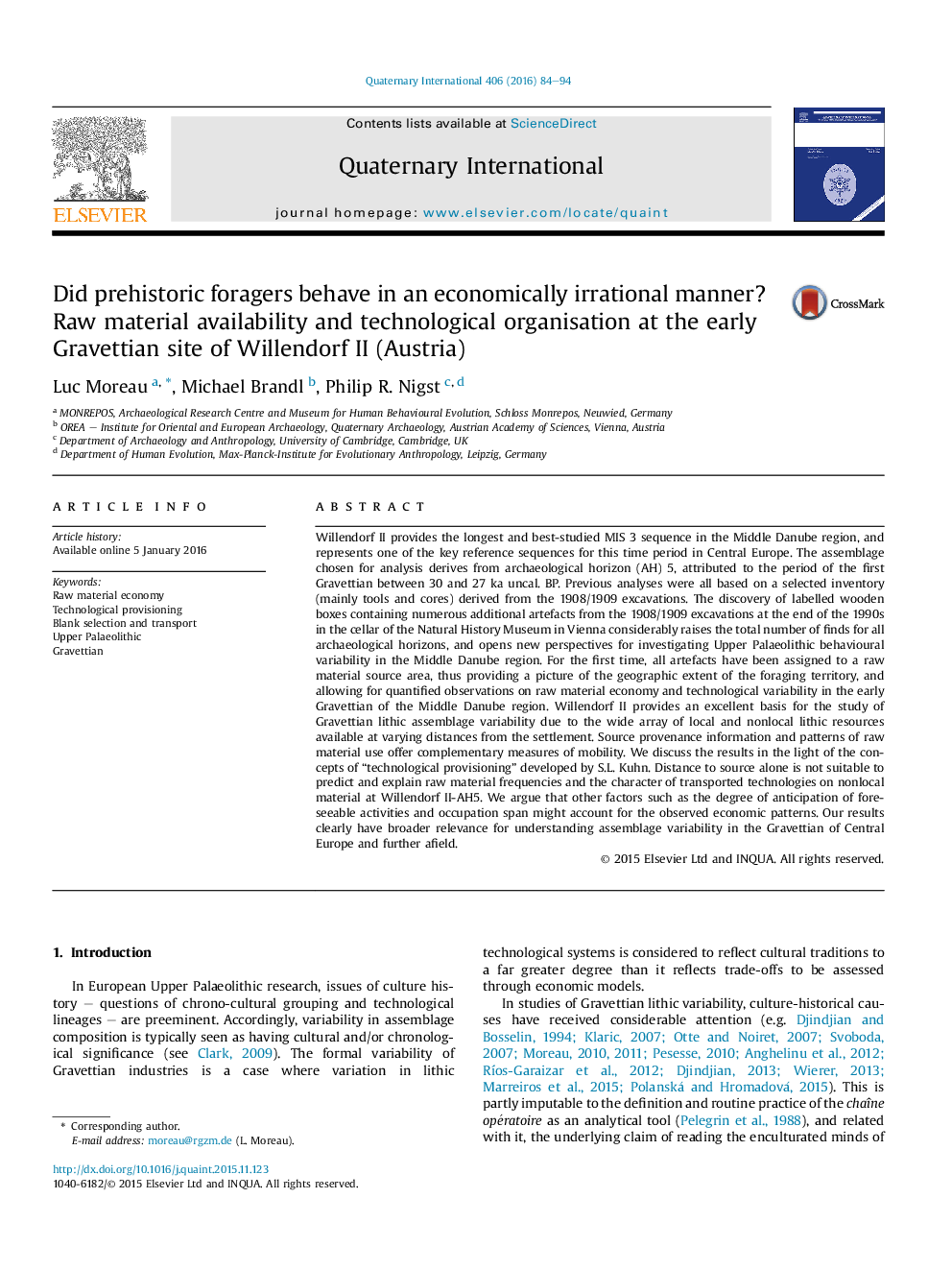| کد مقاله | کد نشریه | سال انتشار | مقاله انگلیسی | نسخه تمام متن |
|---|---|---|---|---|
| 1039968 | 944445 | 2016 | 11 صفحه PDF | دانلود رایگان |
Willendorf II provides the longest and best-studied MIS 3 sequence in the Middle Danube region, and represents one of the key reference sequences for this time period in Central Europe. The assemblage chosen for analysis derives from archaeological horizon (AH) 5, attributed to the period of the first Gravettian between 30 and 27 ka uncal. BP. Previous analyses were all based on a selected inventory (mainly tools and cores) derived from the 1908/1909 excavations. The discovery of labelled wooden boxes containing numerous additional artefacts from the 1908/1909 excavations at the end of the 1990s in the cellar of the Natural History Museum in Vienna considerably raises the total number of finds for all archaeological horizons, and opens new perspectives for investigating Upper Palaeolithic behavioural variability in the Middle Danube region. For the first time, all artefacts have been assigned to a raw material source area, thus providing a picture of the geographic extent of the foraging territory, and allowing for quantified observations on raw material economy and technological variability in the early Gravettian of the Middle Danube region. Willendorf II provides an excellent basis for the study of Gravettian lithic assemblage variability due to the wide array of local and nonlocal lithic resources available at varying distances from the settlement. Source provenance information and patterns of raw material use offer complementary measures of mobility. We discuss the results in the light of the concepts of “technological provisioning” developed by S.L. Kuhn. Distance to source alone is not suitable to predict and explain raw material frequencies and the character of transported technologies on nonlocal material at Willendorf II-AH5. We argue that other factors such as the degree of anticipation of foreseeable activities and occupation span might account for the observed economic patterns. Our results clearly have broader relevance for understanding assemblage variability in the Gravettian of Central Europe and further afield.
Journal: Quaternary International - Volume 406, Part A, 25 June 2016, Pages 84–94
